Rats get these ectoparasites (ecto meaning Out or External) from either another infested rat, or from fomites (infected bedding, toys, things that are paper or wood-based, even on us to carry it to them from another rat). The best way to not have these buggies invade your lives is prevention. Freezing any paper or wood-based bedding for 48 hours will kill off any stowaways, and if you handle other rats, make sure to wash your hands, and change your clothes before going near your own rats.
But now that you have these ectoparasites, lets figure out what they are and get rid of them!
The most common ectoparasites are lice and mites. Both of these buggies will only feed off your rats, not you or your other animals.
Here are classic shoulder mites
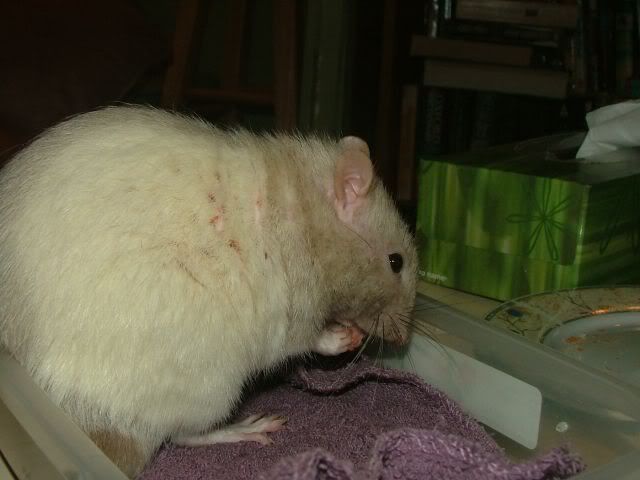
and face
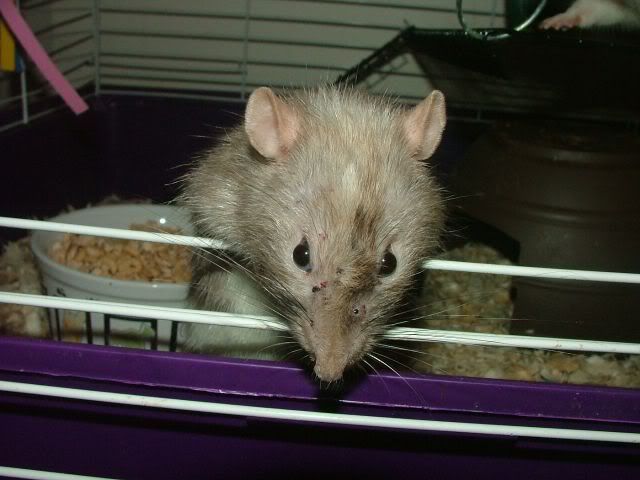
and here you can see how much can be hidden under their coat
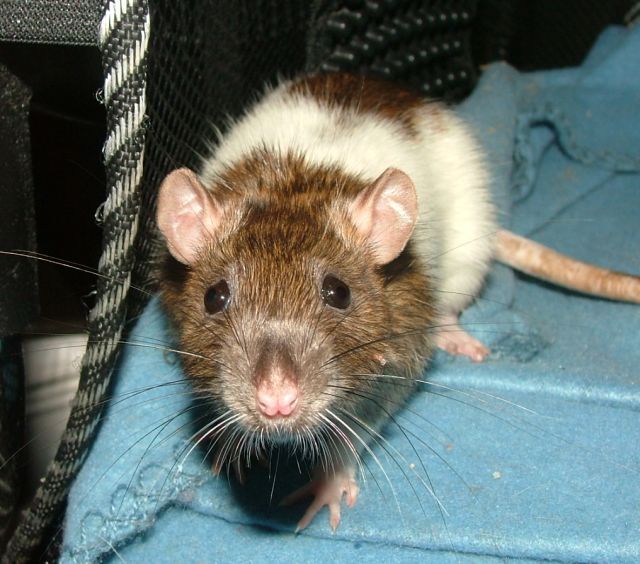
and after she was wet down
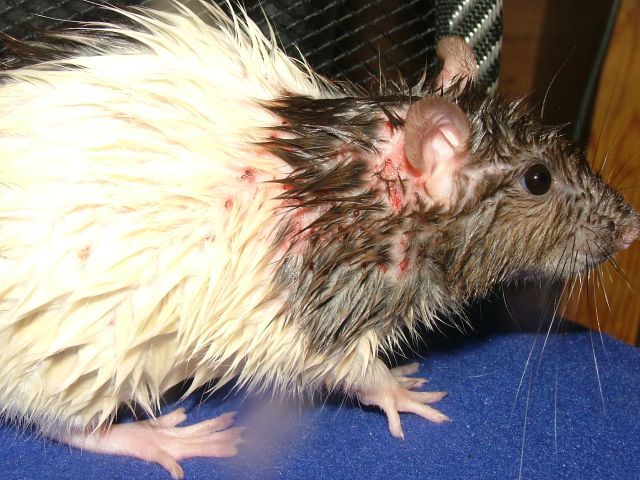
Lice on the back

A closeup of a louse...if you see any red its the blood it just ingested after a meal from your rat.
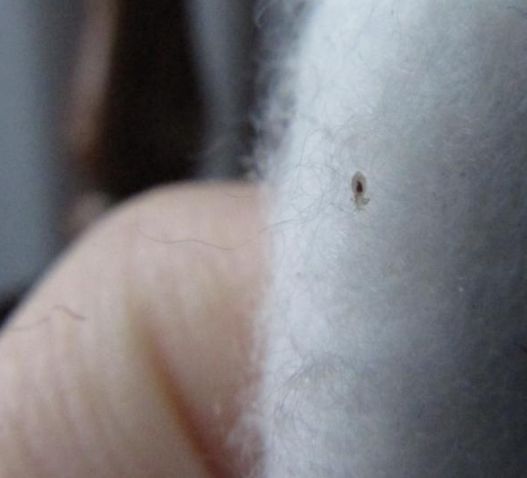
Nits (lice eggs) on the rump and back
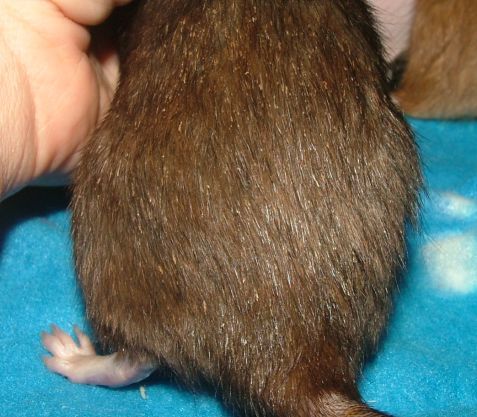
Here is a extremely infested rat. Bad infestations can cause anemia in rats and be dangerous, so its best not to wait to treat these types of rats as the parasites are sucking them dry.
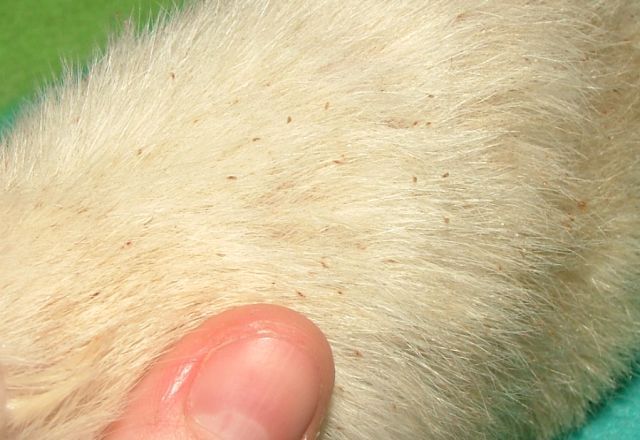
The poor fellow had scratched and groomed off the fur from his legs :(
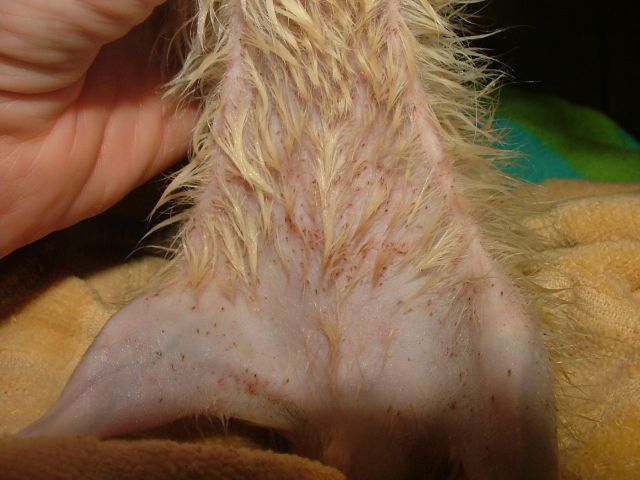
Treatments - There are only 2 recommended treatments for ectoparasites on rats, as store-bought treatments are unregulated and there are many horror stories out there of rats getting sick or even dying from a treatment because you are essentially using a poison. It's not advisable to treat baby rats if at all possible. If you must treat, use Revolution for the very young rats, especially since infestation of parasites can cause anemia and health issues.
Ivermectin
Oral Paste - comes in a tube for de-worming large livestock, you can get it at tack stores, feed stores, etc. For an adult rat the dose would be a piece the size of an uncooked grain of rice, once a week for 3 weeks as Ivermectin only kills hatched out adults and the buggies have 3 life cycles.
Injectable - can be used orally, topically, and injected (injections are not recommended as they are painful, often expensive and its found sometimes it doesn't work).
Topical treatment is putting the dosage on the rats coat so that they ingest it while grooming.
Note : Ivermectin should be used carefully as it is more toxic, so make sure you have your dose right before treating.
• Ivermectin horse paste is not recommended by vets. It's a use at your own risk over the counter medicine. Many people have had great success with the horse paste when used correctly.
• Chart on dosing as per weight using injectable topically at guinealynx.
After each treatment you will need to scrub your cage carefully, let it sit with a bleach and water solution on it for a few minutes, then carefully rinse and wash that off. You will need to freeze any wood or cardboard/paper toys, vacuum and clean around the cage area.
Revolution (Stronghold in the UK)
Revolution is a treatment you need to get from your vet. It is topical and all you do is open the tube (by pushing down on the cap until you hear a pop) and then part the fur to the skin, and put a single drop on that spot. Try to distract the rat for a minute while the Revolution absorbs through the skin into the blood stream. That's it, the Revolution stays effective for 30 days which is longer than the buggies life cycle. Easiest and safest treatment but can be harder to get than the Ivermectin for some people.
Please note that Kitten/Puppy, and Cat have a concentration of 60 mg/ml, and Dog is twice as strong at 120 mg/ml.
For the people who want to be accurate about your dosing the recommended dosage as per RatGuide is 6 mg/kg

No comments:
Post a Comment